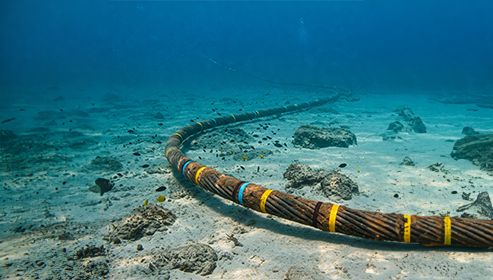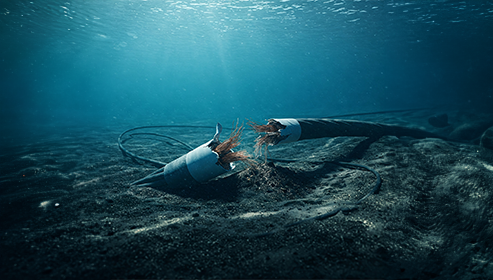Undersea Cable Disruptions: A Growing Threat to Global Communications and Waterworth’s AI Infrastructure
The world’s undersea cable networks—responsible for carrying over 95% of international data traffic—are increasingly under scrutiny due to incidents ranging from natural disasters to alleged acts of sabotage. Recent events, including investigations into mysterious disruptions in the Baltic Sea and the well-documented 2022 Tonga cable incident following the volcanic eruption, underscore the vulnerability of this critical infrastructure. With Waterworth’s AI-driven projects and data processing relying heavily on these global connections, any interruption poses significant operational risks.
Geopolitical Concerns and Investigations
In late 2024, two major submarine cables—the BCS East-West Interlink and C-Lion1—were cut in the Baltic Sea under circumstances that have prompted investigations into potential deliberate interference. Some reports have pointed to the possible involvement of a Chinese cargo ship, Yi Peng 3, although no conclusive evidence has been released (Wikipedia). In a separate incident, Finland’s Estlink 2 power cable sustained unexplained damage, and unconfirmed reports suggested that a Russian-owned oil tanker might have played a role (Wikipedia). Authorities and international bodies continue to investigate these incidents, emphasizing that attribution in such complex cases remains challenging.
In response to growing concerns, NATO has reportedly intensified its surveillance and protective measures for critical underwater assets. Some sources have mentioned an initiative dubbed Operation Baltic Sentry, aimed at enhancing monitoring capabilities and ensuring a rapid response to any further disruptions (The Times). This increased focus reflects the broader recognition of the risks posed by both state-sponsored actions and other forms of interference.
Natural Disasters and Accidental Disruptions
Not all undersea cable interruptions are the result of human action. In 2022, a volcanic eruption near Tonga—accompanied by a significant tsunami—severed the nation’s only undersea internet cable, leaving the country isolated for weeks (The Guardian). Additionally, reports from 2023 indicate that Vietnam experienced significant internet outages after failures in multiple undersea cables, a stark reminder of the risks associated with limited network redundancy (University of Hawaii). These cases illustrate the dual threat posed by both natural events and accidental damage.
The Waterworth Connection: AI, Cloud Infrastructure, and the Need for Resilience
Waterworth’s AI-driven research, data analytics, and cloud processing depend on reliable, high-speed global connectivity. As AI models require the rapid transfer of large data sets, disruptions to undersea cables can lead to increased latency and data bottlenecks—potentially hindering AI training, deployment, and real-time analysis.
Furthermore, Waterworth has been exploring AI-powered subsea monitoring systems as part of its broader technological initiatives. By implementing autonomous underwater drones and AI-driven surveillance, early warning capabilities could be enhanced, helping to detect and mitigate cable disruptions before they escalate into major crises.
Regulatory and Industry Responses
In recognition of these emerging risks, the U.S. Federal Communications Commission (FCC) announced a review of undersea cable vulnerabilities in late 2024 (Reuters). This initiative seeks to bolster regulations, improve network resilience, and explore funding for alternative connectivity solutions, such as satellite internet and enhanced terrestrial fiber networks.
For Waterworth, diversifying its infrastructure and investing in alternative data pathways are becoming essential strategies to maintain operational continuity in an environment of growing uncertainty. As the AI sector continues to expand, ensuring uninterrupted data flow will be crucial for both security and maintaining a competitive edge.
The Road Ahead
Undersea cables are far more than mere conduits for internet traffic—they represent a critical element of modern communication networks that face a spectrum of risks, from natural disasters to alleged acts of sabotage. With ongoing investigations, evolving regulatory responses, and the increasing importance of robust connectivity for AI-driven operations, organizations like Waterworth must remain vigilant. Investing in advanced monitoring solutions, redundant connectivity strategies, and strategic partnerships with cloud providers will be key to navigating the complex challenges ahead.



